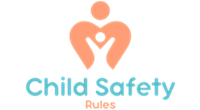Child safety is of utmost importance when it comes to preventing accidents and injuries. As parents and caregivers, it is our responsibility to create a safe environment for our children to thrive in. One way to ensure their safety is by implementing child safety rules in our homes and communities.
Child safety rules are guidelines put in place to protect children from harm and potential dangers. These rules encompass a wide range of safety measures, from setting boundaries and establishing clear expectations to educating children on how to stay safe in various situations. By following these rules, parents can help prevent accidents and injuries that could otherwise be avoided.
One of the most common causes of accidents and injuries in children is falls. It is important to establish rules around climbing on furniture or playground equipment, running indoors, and playing near stairs or balconies. By teaching children to always use handrails, to avoid roughhousing in dangerous areas, and to never climb on unstable structures, parents can reduce the risk of falls and related injuries.
Another common danger for children is drowning. Whether it be in a pool, bathtub, or natural body of water, drowning is a serious threat to children’s safety. Parents should establish rules around water safety, such as never leaving a child unattended near water, always using flotation devices when swimming, and teaching children how to swim at an early age. By enforcing these rules, parents can significantly reduce the risk of drowning accidents.
Similarly, rules around car safety are essential for preventing traffic accidents and injuries. All children should be securely fastened in a car seat or booster seat appropriate for their age, height, and weight. Parents should also enforce rules about never playing in or around vehicles, and always holding an adult’s hand when crossing the street. By instilling these habits early on, parents can help protect their children from potential harm on the road.
In addition to these specific safety rules, there are general guidelines that parents can follow to help prevent accidents and injuries. This includes teaching children about stranger danger, proper use of appliances and tools, and the importance of wearing helmets and protective gear during physical activities. By educating children about potential risks and how to navigate them safely, parents can empower them to make smart choices and avoid dangerous situations.
Child safety rules are a critical component of accident prevention and injury mitigation. By establishing clear guidelines, enforcing safety protocols, and educating children about potential risks, parents can create a secure environment for their children to grow and thrive in. Remember, a little bit of prevention goes a long way when it comes to keeping our children safe.










